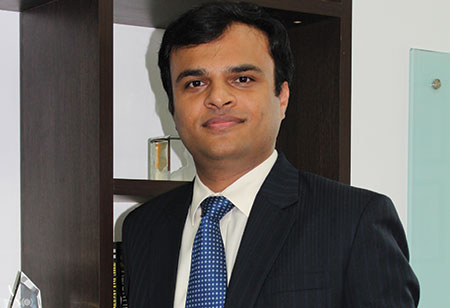Leadership competencies that drive organizational growth
By Amogh Deshmukh, Member, Key Leadership Team, DDI India

Amogh Deshmukh, Member, Key Leadership Team, DDI India
In leadership it’s not only the characteristics of the person that determine success, so what more do we need? Over the last few years in my conversations with business leaders across levels, one question that drives my communication has been “What has helped your leaders to drive business growth?”
The Perspective Differs!
I found that at top leadership levels there was a mixed response but more towards the positive side, but as I started going down the leadership chain the response were tilted towards the negative side. That’s unfortunate because the work of HR is often intangible.
It hovers around performance management, compensation & benefits, training and development, talent management, policies and employee engagement. Most of these intangibles are viewed as waste of time by leaders as they feel they directly do not contribute to the topline and bottom-line of their organization.
Without sharing any further tips on What NEXT? Let me drive your attention to another interesting fact; these leaders did not become effective at these competencies only after entering the top executive cadre.
These competencies get developed over a period of time. This means, one needs to start developing them at an early stage of their career.
The warp speed of business has hastened the pace of leaders being thrust into roles of increasing scope and responsibility, ready or not.
So we looked at connecting the dots further and researched further to find that when we compare readiness of senior leaders across industries on certain set of competencies and found that traditional manufacturing industries have less readiness at senior leadership levels as compared to some new age industries.
What this means for a country like India especially where “Make in India” is catching steam, that many leaders from the baby boomer era are not effective in managing or rather driving the new change agenda.
What is worrisome is that, in the last two decades India faced some serious brain drain. Either good talent has moved out of India to countries like US, UK, Europe, Asia for better prospects or they choose to stay back in India but decided to take on more attractive jobs like Information Technology or Financial Services.
This has left many manufacturing setups to manage with the talent they had to their disposal and make most out of the same. That is why the new age industries have started seeing leaders in middle and senior levels in mid 30’s or early 40’s.
But same is not the case with the traditional manufacturing industries. The average age of middle or senior level leaders is still in late 40’s or mid 50’s. Thankfully, this trend is slowly changing and young talent is open to picking up jobs in some mainstream manufacturing industries. But it will take a decade or two for this ship to make a turn. Till then these organizations will have to look at offsetting this gap by focusing on developing the talent that is existing in the organization.
The Experience Effect!
This brings us to an interesting element of DDI’s research on the correlation between competencies and the years of experience the leaders have.
Does Tenure as a Manager Grow or Slow Leaders? Well there is it’s a big myth that more the experience the leader has the better the competence.
During our research we found that competencies like Executive Disposition and Operational Decision Making can be developed at a very young age.
No wonder; the young CEOs of many large and successful startups exhibit these time and again. But some competencies need more years of experience and hence very seasoned leaders demonstrate these effectively.
But what came as surprise was that competencies like Coaching and Selling the Vision are ageless and timeless. They needed to be relearned every few years and with the very change in strategy. That puts the myth to rest that with experience competencies get better.
What Next?
Considering what we have reviewed so far, what can organizations do to enable their top leaders?
• Be cautious about overweighting certain skill sets as you identify leadership successors, particularly among your senior executives. Some top leaders become so famous for their business wizardry that they may even be excused for their leadership derailers.
• Align hiring and promotion processes toward low- or no-growth skills. These skills are best targeted through assessment rather than development programs.
• Recognize that some skills, while they are developable, can be mastered only through sustained focus and extensive support.
• Few things that we can start moving are Design high-quality developmental assignments for early-tenure leaders to take advantage of natural growth trajectories for driving for results, inspiring excellence, and leading teams.
• As you develop your emerging leaders, balance is thekey. Without the ability to engage people, great business schemes aren’t worth the slide shows they’re projected in.
• As they say last but not the least - It takes a village (of executives)! The fastest- growing, most-profitable companies in our studies had cadres of executives with wide-ranging leadership skills. A few talented leaders won’t compensate for a large group of mediocre ones. Accelerated growth initiatives and learning journeys for senior leaders can quickly turn your capabilities around.




